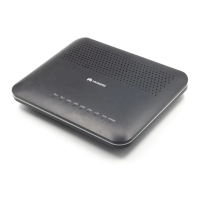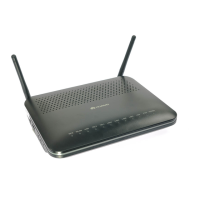the Intranet host IP address and port ID to Extranet IP address and corresponding port ID so that
users from Extranets can access the Intranet server. With port mapping, the users cannot see the
Intranet IP address and they see the Extranet IP address.
Table 5-10 describes the parameters related to port mapping.
Table 5-10 Parameters related to port mapping
Parameter Description
Interface Indicates the name of the WAN interface where port mapping is
enabled.
Protocol Indicates the protocol type of port mapping packet, which may
be TCP, UDP, or TCP/UDP.
External Start Port Indicates the destination start port of the external data packet.
External End Port Indicates the destination end port of the external data packet.
Internal Start Port Indicates the internal destination start port of the port mapping
packet.
Internal End Port Indicates the internal destination end port of the port mapping
packet.
External Source Start Port Indicates the source start port of the external data packet.
External Source End Port Indicates the source end port of the external data packet.
Internal Host Indicates the IP address of the host to which the port is mapped.
External Source IP
Address
Indicates the source IP address of the external data packet.
Mapping Name Indicates the name of the port mapping rule.
Enable PortMapping Indicates whether to enable port mapping.
5.7.3 PortTrigger Configuration
1. In the navigation tree on the left, choose Forward Rules > PortTrigger Configuration.
In the pane on the right, click New. In the dialog box that is displayed, set the parameters
related to the port trigger, as shown in Figure 5-27.
EchoLife HG8010/HG8110/HG8240/HG8245/HG8247/
HG8447 GPON Terminal
Service Manual 5 Web Page Reference
Issue 02 (2011-12-08) Huawei Proprietary and Confidential
Copyright © Huawei Technologies Co., Ltd.
326

